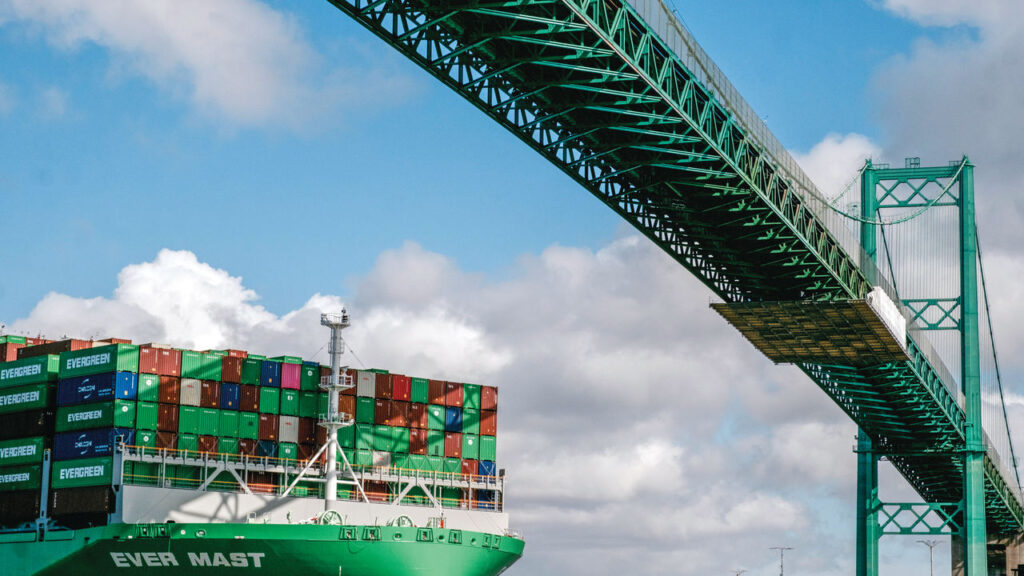America’s trade policy is experiencing a tumultuous period, characterized by shifts in strategy and significant challenges both domestically and internationally. The complexity of global supply chains, rising protectionism, and geopolitical tensions have all converged to create an environment where consistency in trade relations appears increasingly elusive. As the United States navigates this chaotic landscape, various factors come into play that complicate its trade strategy and threaten economic stability.
First and foremost, the legacy of recent administrations plays a critical role in understanding the current state of American trade policy. Under the Trump administration, there was a marked shift toward an “America First” approach, which saw the imposition of tariffs on numerous imports, particularly from China. This approach aimed to protect American jobs and industries but also led to retaliatory measures from trading partners, escalating tensions and creating trade wars. Importantly, this strategy created uncertainty for American businesses and industries reliant on global supply chains, significantly impacting sectors such as agriculture and manufacturing.
The Biden administration, which took office in January 2021, promised a different approach. While initially focusing on repairing relationships with traditional allies and returning to multilateral agreements, it soon faced several hurdles. The pandemic exacerbated existing supply chain issues, leading to a surge in demand for goods and shipping services. This chaos exposed vulnerabilities within the U.S. economy, highlighting a heavy reliance on foreign manufacturing and leading to increased prices for consumers. In response, the Biden administration has initiated various measures, including addressing bottlenecks at ports and seeking to strengthen domestic production capabilities.
Furthermore, the tension between fostering free trade and enacting protectionist policies remains a significant challenge. On one hand, proponents of free trade argue that open markets drive economic growth, create jobs, and foster innovation. On the other hand, advocates for protectionism emphasize the need to safeguard domestic industries from foreign competition. This ideological divide complicates efforts to create a cohesive trade policy that meets the needs of a diverse American economy while addressing the concerns of various stakeholders, including labor unions and corporate interests.
In addition to the internal challenges presented by differing political ideologies and competing interests, international relationships also play a crucial role in shaping U.S. trade policy. The ongoing tensions with China are perhaps the most significant aspect of this dynamic. The competition for technological supremacy, particularly in areas like artificial intelligence and telecommunications, complicates matters further. The U.S. has implemented measures aimed at curbing Chinese companies, but this has been met with fierce retaliation, creating a cycle of conflict and uncertainty.
Notably, trade relations with other countries, notably Canada and Mexico under the United States-Mexico-Canada Agreement (USMCA), also highlight the dilemmas facing American trade policy. While the agreement was designed to modernize trade relations and promote fair competition, questions remain regarding labor standards and environmental regulations. Additionally, ongoing disputes over dairy products and automotive tariffs illustrate that even regional agreements can be fraught with contention, suggesting that a comprehensive trade strategy remains distant.
Amidst this chaotic backdrop, public opinion continues to evolve regarding trade. The traditional narrative that free trade is inherently beneficial is being reevaluated, particularly as many Americans feel the sting of job losses and economic disparities. As a result, political leaders are increasingly forced to reconsider their stances, balancing the benefits of global trade with the realities faced by their constituents.
In summary, America’s trade policy is currently in a state of disarray, influenced by historical legacies, intra-national divisions, and international tensions. With competing priorities and complex issues to navigate, the path forward is riddled with challenges. As the U.S. government strives to establish a coherent and effective trade strategy, it must reconcile these varying interests against the backdrop of a rapidly changing global landscape. The stakes are high, as the decisions made in the coming years will undoubtedly have lasting implications for the American economy and its role in the international community.



